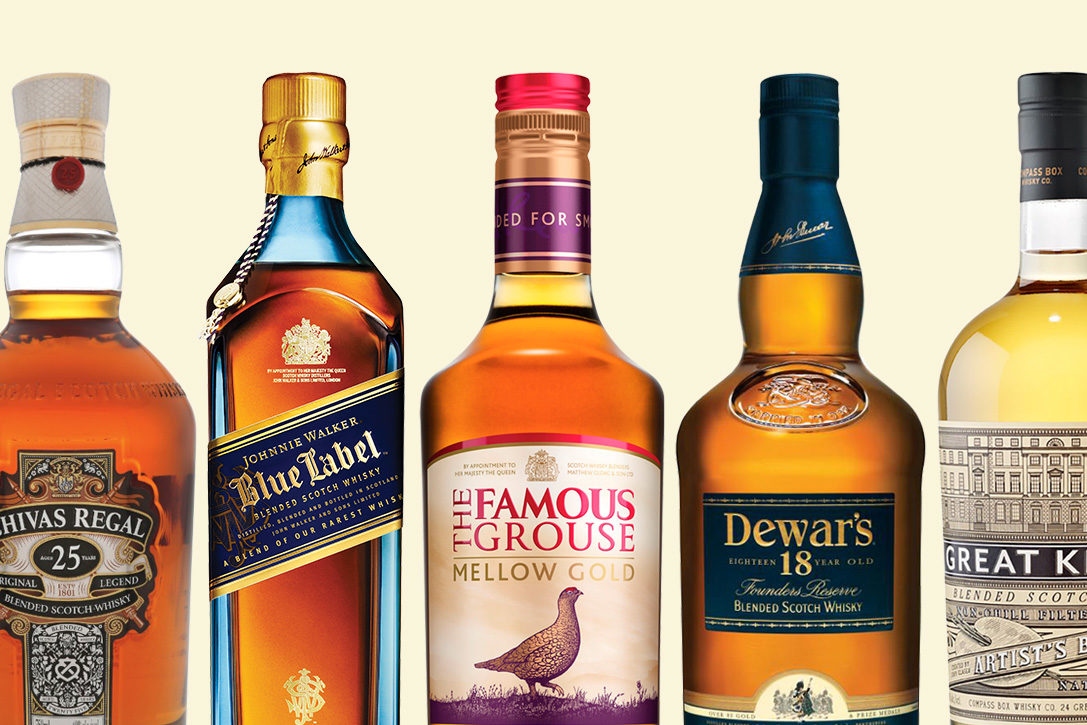Blended Whiskey

Blended whiskey is made in the United States, Canada and Scotland under government supervision in accordance with the regulations covering the manufacture of whiskey and spirits in each country.
In the U.S. government regulations specify that blends must contain at least 20 percent straight whiskey on a proof gallons basis and separately or in combination whiskey or neutral spirit, bottled at not less than 80 percent proof like all American-type whiskeys.
Blended whiskeys are a masterful blend of straight whiskeys that have been distilled and aged especially for blends as are the grain neutral spirits.
Blending is a refining process- the same concept that produces blends in most products,; clothes, coffee, teas. Blended whiskeys were developed to meet that demand for a lighter taste and lower proof preferences of a large segment of consumers.
By official us government definition, the standard identification is: a mixture which contains at least 20 percent by volume of 100 proof straight whiskey and separately or in combination, whiskey or neutral spirits, if such mixture at the time of bottling is to less than 80 proof. Neutral spirits are those distilled at or above 190 proof.
Are blends, then, a “mixture “as the definition implies? Hardly. Blended whiskeys are “built”. Every blend on a store shelf has a number of straight whiskeys in its formula. A premium brand may contain as many as 75 different straight whiskeys and grain neutral spirits.
The purpose of blending is to create a balanced, light bodied whiskeys, with a richness in taste and in individual character of its own. Balance is achieved because the blending art assembles a variety of whiskeys and grain neutral spirits which complement each other to develop an exceptionally uniform composite flavor characteristics. Its is important to note that the grain neutral spirits which complement each other develop an exceptionally uniform composite flavor characteristics it is important to note that the grain neutral spirits, having lighter flavor intensities are used in greater proportions thus making it possible to achieve a higher degree of palatability.
As many 75 different straight whiskeys and grain neutral spirits go into the premium blend brands. After blending, the whiskey and spirits are allowed to mingle together for a considerable length of time known as the “marrying period“.
The great advantage offered by a skillfully engineered American whiskey blend brand, then, is that if you liked its taste on a former occasion, you are certain to like it each time you purchase it. The taste quotient can be maintained year after year.
In order to hold this taste pattern ,according to blend producers, the blender must continually adjust his matching of taste qualities, because no two straight whiskey are exactly alike. They vary with each grain crop and they vary slightly from batch to batch. In creating this blend, the blender must continually compensate for these changes to maintain uniformity.
If you compare neutral grain spirits with straight whiskey on the basis of their respective distilling proofs, you can readily understand the difference between them. Grain neutral spirits distilled at 190 proof contain five percent water and congeners. Straight whiskey distilled at 130 proof contains 35 percent water and congeners.
In each instance the flavor and character of the liquid is derived entirely from its congeneric content, therefore, it is obvious that the straight whiskey is heavier bodied than the grain neutral spirits.
In producing a blended whiskey, the distiller combines several heavier-bodied whiskeys with an extremely light bodied one (neutral spirits or Light whiskey), sometimes adding a blending agent such as sherry to achieve an even lighter blend agent of whiskey. A blending agent ,such as sherry must be used in extremely small amounts (limited by law to 2.5 percent of the total volume).It is unusual to use even this small amount.
Click Below
Blended Whiskey
Irish Whiskey
Light Whiskey
Scotch



